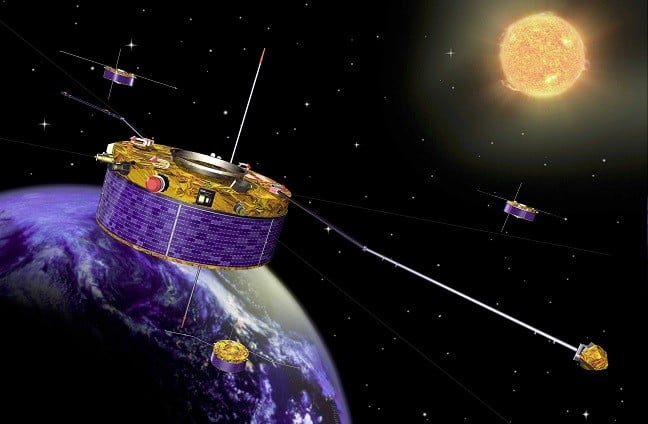ESA's Cluster Mission Ends After 22 Years of Stellar Science

After an extraordinary two decades of pioneering space research, the European Space Agency's (ESA) Cluster mission is drawing to a close. The first of the four Cluster satellites, Salsa, is scheduled to re-enter the Earth's atmosphere on 8 September, burning up over the South Pacific. The remaining three, Rumba, Samba, and Tango, will follow suit during 2025 and 2026.
ESA controllers have meticulously targeted Salsa's re-entry to ensure that any surviving fragments do not pose a risk to populated areas. To achieve this, the satellite's orbit was adjusted in January, causing it to descend from an altitude of approximately 110 km to 80 km. As Cluster Operations Manager Bruno Sousa explains, "This provides us with the maximum control over where the spacecraft will be captured by the atmosphere and begin to burn up."
The four identical Cluster spacecraft were launched in 2000 with the ambitious goal of studying Earth's magnetosphere, the invisible shield that protects us from the Sun's harmful radiation. By flying in formation, the satellites were able to gather unprecedented data on the dynamic interactions between the magnetosphere and the solar wind, contributing significantly to our understanding of "space weather."
Initially planned as a two-year mission, Cluster's remarkable longevity is a testament to the ingenuity and dedication of ESA engineers. They devised ingenious strategies to extend the spacecraft's operational lifespan, even after the initial batteries were depleted. By carefully managing power consumption and automating shutdown and recovery procedures, the satellites continued to collect valuable scientific data for an additional 18 years.
This resilience earned Cluster the nickname "zombie spacecraft," as it was able to "wake up" from its automated shutdown during periods when it passed into the Earth's shadow. Their longevity allowed them to observe multiple solar cycles, providing unparalleled insight into the Sun's influence on our planet.
Despite its remarkable success, the time has come for Cluster to bow out. As early as 2020, ESA acknowledged that 2024 would mark the end of the mission, with the final re-entries carefully orchestrated to ensure safety.
Following Salsa's re-entry, the remaining Cluster satellites will transition to "caretaker" mode, remaining operational but no longer conducting scientific observations. Controllers will continue to monitor them until their eventual re-entry.
However, the end of Cluster does not signify the end of ESA's exploration of Earth's magnetic environment. The Solar wind Magnetosphere Ionosphere Link Explorer (SMILE) mission is set to launch in late 2025, and there is a good chance that at least two Cluster spacecraft will still be in orbit, providing valuable data for comparison.
While SMILE's mission is planned for three years, Cluster's remarkable 22-year journey serves as a powerful reminder of the extraordinary achievements that can be accomplished through sustained commitment and innovative engineering. As Sousa aptly stated in 2020, "Never give up. Never surrender."





